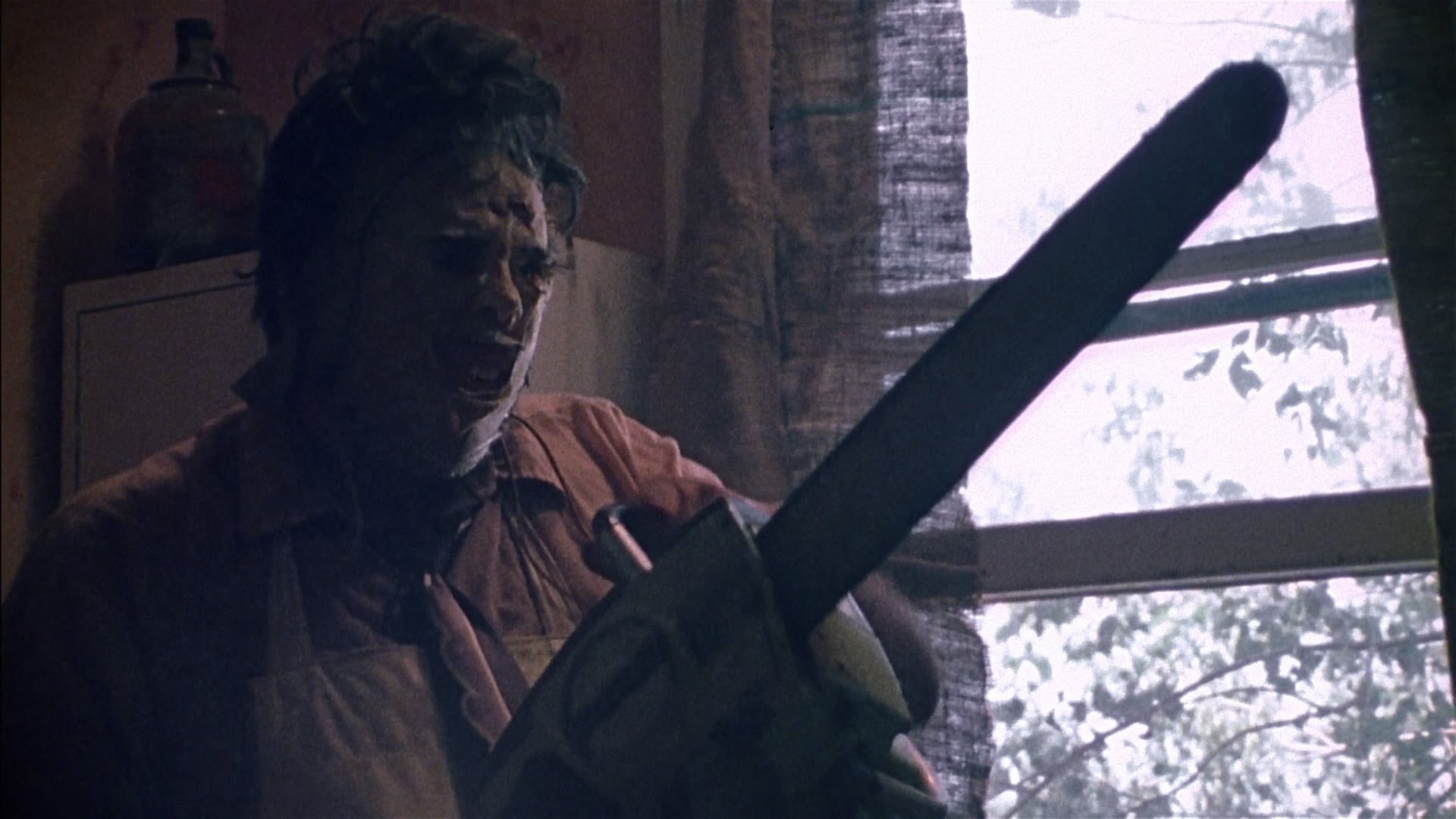
Gather the family and rev up the power tools! Today, Shout! Factory carves us something proper with the blu-ray release of The Texas Chainsaw Massacre 2. The 1986 original sequel to the 1974 horror classic that remains one of the most rewarding ambitious departures of a franchise ever arrives on two discs with every bell and whistle accounted for, including that ominous original Tobe Hooper/Jerry Lambert score. Never sounding better, the aural elements call to mind the unique space that the film’s imagery and legacy have made within references in popular music.
Sonically, the score differences between the first and second Texas Chainsaw Massacre film are what one could expect between a ‘70s independent film and a multi-million dollar ‘80s follow-up. The first, also helmed by director Tobe Hooper and assisted by Wayne Bell (who additionally worked with Hooper on his follow-up film Eaten Alive) was a creepy mix of distinctly Texan musical elements and piercingly unsettling sound effects. The following decade, Hooper and Lambert (the latter of which is fairly reclusive, but would go on to a lengthy career in the music department including two Friday the 13th sequels) make a synth-heavy staccato score, effectively turning the keyboard into a deadly gas-powered apparatus of its own.
While Texas Chainsaw Massacre 2 does veer into horror-comedy and even horror-romance far more than the original, the traditional elements of the score within the horror canon help ground the film into a certain serious reality without being a farce. The musical chainsaw goes right up to the line of effectively being Phantom of the Slaughterhouse, but recoils at the last second to keep the action going.
Music itself does set the stage for one of Texas Chainsaw Massacre 2’s most memorable scenes. The KOKLA Radio Station is where we’re introduced to Choptop, after a harrowing amount of plunder and the type of destruction any curious child around a record collection must have relished imagining. This scene in particular is also responsible for one of the film’s most famous lines, “dog will hunt.”
Outsider music or skateboarding video game fans most likely will recognize that line from the middle of Primus’ “Jerry Was a Racecar Driver:”
It’s not the only bit of dialogue taken directly from the film. “Just an Accident” from The Hellacopters’ “(Gotta Get Some Action) Now!” and “Saw is Family” from “On the Wings of Inferno” by Asphyx both sample the movie, delighting the film’s fans and completely blindsiding the unfamiliar. The original film’s been sampled a number of times as well, most notably Buckethead’s “Jowls” and White Zombie’s “One Big Crunch.”
These are all without even mentioning the place that the film, Leatherface and massacres involving chainsaws within the Texan state borders have in the popular music zeitgeist as well. Classic rockers like Deep Purple and The Rolling Stones, whose entire second verse of “Too Much Blood” involves a conversation asking someone if they’ve seen the film, show how much of a cultural touchstone the original Texas Chainsaw Massacre was to result in an international reference point. Texas rappers The Geto Boys (“Assassin”) and Lil Keke (“Don’t Mess With Texas”) both proudly point to their state’s titular horror classic. Not to be outdone, New York rappers Company Flow (“8 Steps to Perfection”), Big Pun (“Leatherface”), Kool Keith (“Mopped Up”) and Ka (“The Texas Chain Saw Massacre”) and dipped into varying degrees of Texas Chainsaw mayhem as well. Perhaps the most famous ode to the film was The Ramones’ “Chain Saw,” with its unique spelling only topped by lead singer Joey Ramones’ insistent pronunciation of the title as “mass-a-cree.”
The music of the earliest Texas Chainsaw Massacre films is something that’s been present in several of the subsequent sequels and reboots. For the fourth film, Texas Chainsaw Massacre: The Next Generation (the one starring Matthew McConaughey and Renée Zellweger) original co-composer Wayne Bell was brought in to work with Robert Jacks in Jacks’ final film. Later, the 2003 remake went as far with the original theme as to give Hooper and Bloom a musical credit for it. The remake’s composer Steve Jablonsky would go on to do the remake’s 2006 prequel. As for the original series’ third film, composer Jim Manzie had a successful direct-to-video career, even working with the Insane Clown Posse for their 2010 Juggalo western Big Money Rustlas. While the future of the franchise is uncertain, the sounds will never escape their off-road shack in the twisting path of music history. The saw is family, and it gets us revved up every time.

